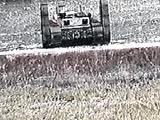 |
|
Tactical Mobile Robot:
This robot was developed under a joint project with the Jet Propulsion Laboratory, Carnegie Mellon University and IS Robotics (now iRobot). Mounted on the robot is a 360 degree camera developed by the CAVE laboratory at Columbia. It is a folded design and the detector is sensitive to visible light as well as infra-red. At the end of the clip you will see the raw video from the camera.
|
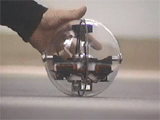 |
|
Passive Cyclops:
The cyclops was developed by Hagen Schempf's group at Carnegie Mellon University. It is about 6 inches in diameter and has a folded 360 degree (omni)camera, video transmitted, microphones and batteries within it. It is a passive mechanical device that can be rolled into an area. It has been mechanically designed so as to always try and keep the optical axis of the omnicamera vertical. A remote user can use mapping software to view the world around the Cyclops as it rolls.
|
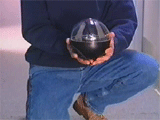 |
|
Active Cyclops:
The second version of Cyclops, also developed by Hagen Schempf's group at Carnegie Mellon University, is an active device. It includes actuators that enables a user to remotely control its rolling. Therefore, if the user is not satisfied with the location of the Cyclops, or would like another view, he/she can simply drive it while watching the immersive video it transmits.
|
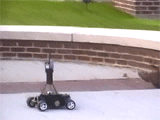 |
|
ParaRover:
This is a remote controlled car with a 360 degree camera, microphones, speakers and wireless video/audio transceivers. This vehicle can be used to explore a remote site, such as a nuclear plant or any other environment that is hazardous to humans. A remote user can drive the car as well as communicate with people in the remote area via the audio devices mounted on it.
|
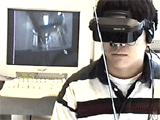 |
|
Remote Driving of the ParaRover:
A person can drive the ParaRover using the Remote Reality system developed by Terry Boult at the University of Colorado, Colorado Springs. By wearing the head-mounted display, the user gets the impression of being located on the rover itself. This enables him/her to maneuver the vehicles with ease.
|
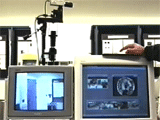 |
|
Omnidirectional + PTZ System:
This video demonstrates an integrated monitoring system that includes a 360 degree camera and a conventional pan-tilt-zoom (PTZ) camera. Here, the 360 degree video provides the observer a global view of the region of interest. When an activity is detected, the 360 degree video is used as an interface to drive the PTZ system which then zooms into the activity region to provide greater detail. |
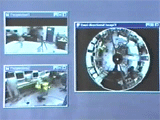 |
|
Multi-body Omnidirectional Tracking System:
This video shows an intelligent tracking system that automatically tracks multiple objects within the omnidirectional field of view. The system generates a perspective view for each moving object and remains focused on the object as it moves around.
|
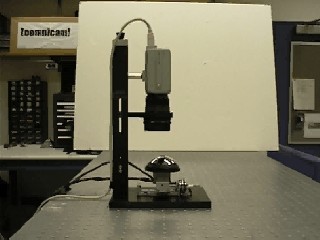 |
|
Zoomnicam:
Wide angle cameras, like the above 360 degree cameras, are inherently limited in resolution due to their large fields of view. The zoomnicam is a novel imaging system that has a very wide optical zoom range that can vary from the narrow field of view of a conventional camera to the hemispherical field of view of an omnidirectional camera. This is done by mounting a curved mirror on a translational stage and using a zoom lens between the curved mirror and the detector. This way any desired section of curved mirror can be imaged. This video shows the principle underlying the zoomnicam. (With audio)
|
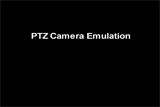 |
|
PTZ Emulation using Zoomnicam:
This video shows how the Zoomnicam can be used to emulate a PTZ camera but with small linear displacements of the curved mirror. (With audio)
|









